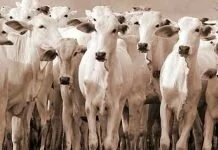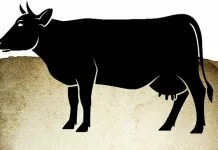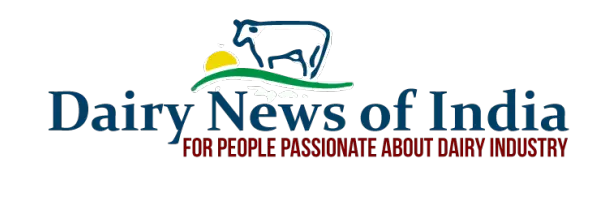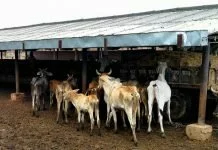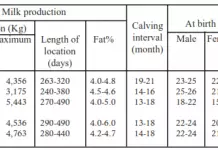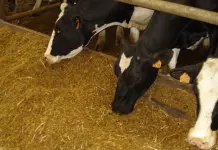Starting a Dairy Farm in India
Dairy farming is a safe business for the following reasons:
- It is Eco-friendly and does not cause environmental pollution as compared to other industries.
- Requirement of skilled labor is relatively less.
- Dairy product market is active round the year.
- Minimum investment on inventory. (No need to to stock raw materials in huge quantities.)
- Entire establishment can be shifted to a new location (if need arises e.g. Fire, Floods etc.)
- One can insure animals.
- Less energy requirement. Biogas plant fed with cow dung can supply maximum energy to meet farms day to day requirement. Decomposed slurry of such plant can also be effectively used as organic manure.
Limitations and Constraints:
- Breeding of animals and getting expected milk yield is a biological phenomenon, which depends upon various factors.
- Dairy farming besides good planning requires hardworking, reliable and alert manager. In India, usually persons from the family take the responsibility.
- Inadequate management of feeding, heard health and lack of quality control in various stage of production can cause major loss affecting the profitability of the entire venture.
Starting the Farm – How to begin with:
- One needs to decide first on the aims and objective of the farm. Every year there should be a progressive aim for breeding (including number of animals to be maintained) and production.
- You can visit dairy farms that run on commercial basis and have a discussion with experienced farm owners. You need not have to rely much on others experience, analyze every event logically and if needed consult with local Veterinarians for more information.
If you plan to manage the farm on your own, look for opportunities to work for an existing farm for a minimum period of six months. - Develop interest and study feed and fodder’s market in your region, its difficulties in relation to seasons.
- Manage a good team of laborers. You need to choose hardworking reliable persons preferably with some experience. You can also train them for specific jobs.
- Visit the cattle market occasionally. Observe animals on sale and talk with persons engaged with purchasing of animals.
- Read magazines and websites on Dairy Industry and keep yourself informed.
Getting some initial professional training…
Opportunities for training are available with most of the:
- Agricultural/Veterinary Universities of various states
- Krishi Vigyan Kendras
- State Department of Animal Husbandry
- State Institute of Rural Development
You can also choose to inquire with National level organization like: National Dairy Research Institute (NDRI) Karnal (Haryana) – For training on rearing of dairy animals and manufacture of milk products.
Alternately, you can also look for training facilities of non-governmental organizations that are active in farming sectors.
| Selecting the animal to farm with – Cows v/s. Buffaloes | |
| Cows | Buffalo |
| Good quality cows are available in the market and it cost around Rs.1500 to Rs.2000 per liter of milk production per day. (e.g. Cost of a cow producing 10 liter of Milk per day will be between Rs.15,000 to Rs.20,000). | In India, we have good buffalo breeds like Murrah and Mehsana, which are suitable for commercial dairy farm. |
| If proper care is given, cows breed regularly giving one calf every 13-14 month interval. | Buffalo milk has more demand for making butter and butter oil (Ghee), as fat percentage in milk is higher then cow. Buffalo milk is also preferred for making tea, a welcoming drink in common Indian household. |
| They are more docile and can be handled easily. Good milk yielding cross breeds (Holstein and Jersey crosses) has well adapted to Indian climate. | Buffaloes can be maintained on more fibrous crop residues, hence scope for reducing feed cost. |
| The fat percentage of cow’s milk varies from 3-5.5% and is lower then Buffaloes. | Buffaloes largely mature late and give birth to calves at 16 to 18 months interval. Male calves fetch little value. |
| Buffaloes need cooling facility e.g. Wallowing tank or showers / foggers with fan. | |
A suggestion to help you in deciding the animal to farm with:
Middle class health-conscious Indian families prefer low fat milk for consumption as liquid milk. We suggest you to go for a commercial farm of mixed type. (Cross breed, cows and buffaloes kept in separate rows under one shed). Conduct a through study of the immediate market where you are planning to market your milk .You can mix milk from both type of animals and sold as per need of the market. Hotels and some general customers (can be around 30%) prefer pure buffalo milk. Hospitals, sanitariums prefer cow’s milk.
What are the various breeds? What is the economic life of animals?
Popular buffalo milch breeds are Murrah, Surti, Mehasani, Jaffrabadi, and Nali – Ravi and Badhawari. The indigenous milch breeds of cattle are Gir, Sahiwal, Red Sindhi and Tharparkar. The exotic breeds of cattle are Holstein Friesian, Jersey and Brown Swiss. Economic life of buffaloes is 5-6 lactation and that of Crossbreed cows is 6-7 lactation.
The minimum economic size to go with?
Under Indian condition a commercial dairy farm should consist of minimum 20 animals (10 cows, 10 buffaloes) this strength can easily go up to 100 animals in proportion of 50:50 or 40:60. After this however, you need to review your strength and market potential before you chose to go for expansion.
A glance at the Infrastructure and Manpower requirements
The space required per animal should be 40 sq.ft in shed and 80sq.ft open space. Besides, you will also need:
- One room 10” x 10” for keeping implements.
- One room 10”x 12” for milk storage
- Office cum living room of suitable size.
- Water tank capable of storing minimum 2000 liters
- Bore well with capacity to fill water tank in 1 hr
Total land requirement for a unit of 20 animals can be sited as 3000 sq.ft. There should be space for expansion. Ideal space requirement for 100 animals is 13,000 to 15,000 sq.ft (120″ x 125”). For 20 animals initially, you can make contractual arrangements for getting an assured supply of 300 kgs. of Lucerne and 400 kgs. of maize fodder per day. However, in long run, as the strength of you farm will go up to 100 animals, It is advisable that you should go for a lease land of 15 to 20 acres with irrigation facility to cultivate green fodder for your animals. (One acre of green fodder cultivation for every five animals is required as a thumb rule.) The economics of whole dairy animal management depends upon its economic feeding. By making fodder’s like Lucerne or Berseem available for your animals you can reduce cost on feeding concentrate feed.
The strength of laborers in your farm can vary with number of animals usually the thumb rule is one labor for every 10 animals on milk or 20 dry animals or 20 young stock.

Comments
comments




